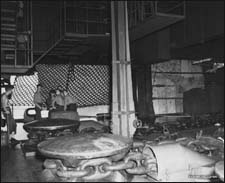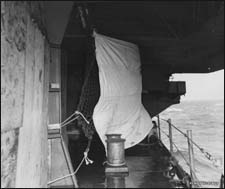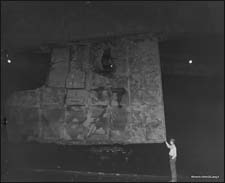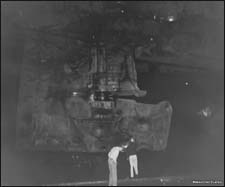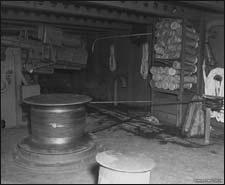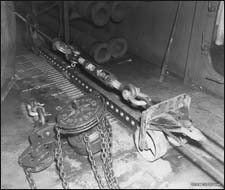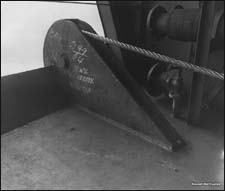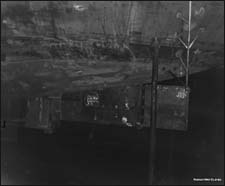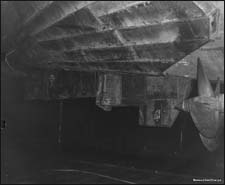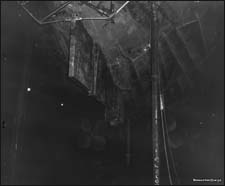| S24/00-redm | U.S.S INTREPID (CV-11) |
| Ser: 051 | 28 March 1944. |
Subject: U.S.S. INTREPID - handling of after Battle Damage.
- - - - - - - - - - - - - - - - - - - - - - - - - - - - - - - - - - - -
to turn left, and vice versa. This method of maintaining steering control offers the opportunity of saving a heavy vessel, uncontrollable by self-contained means.
10. The jury fin and rudder as installed by the Navy Yard, Pearl Harbor, proved to be entirely satisfactory. The rig worked smoothly and the only adjustment necessary during the passage to the West Coast was to readjust the running ends of the jiggers on the capstan to take up the stretch of the wire cables. This stretch was taken up during the first three days of the voyage and thereafter needed no further attention.

Copies to:
Cominch
Cincpac
ComSerPac
Comdt NY, Pearl
BuShips (2)
ComAirPac, additional
15 copies for dis-
tribution to CV-9
class carriers as
desired.
- 7 -
